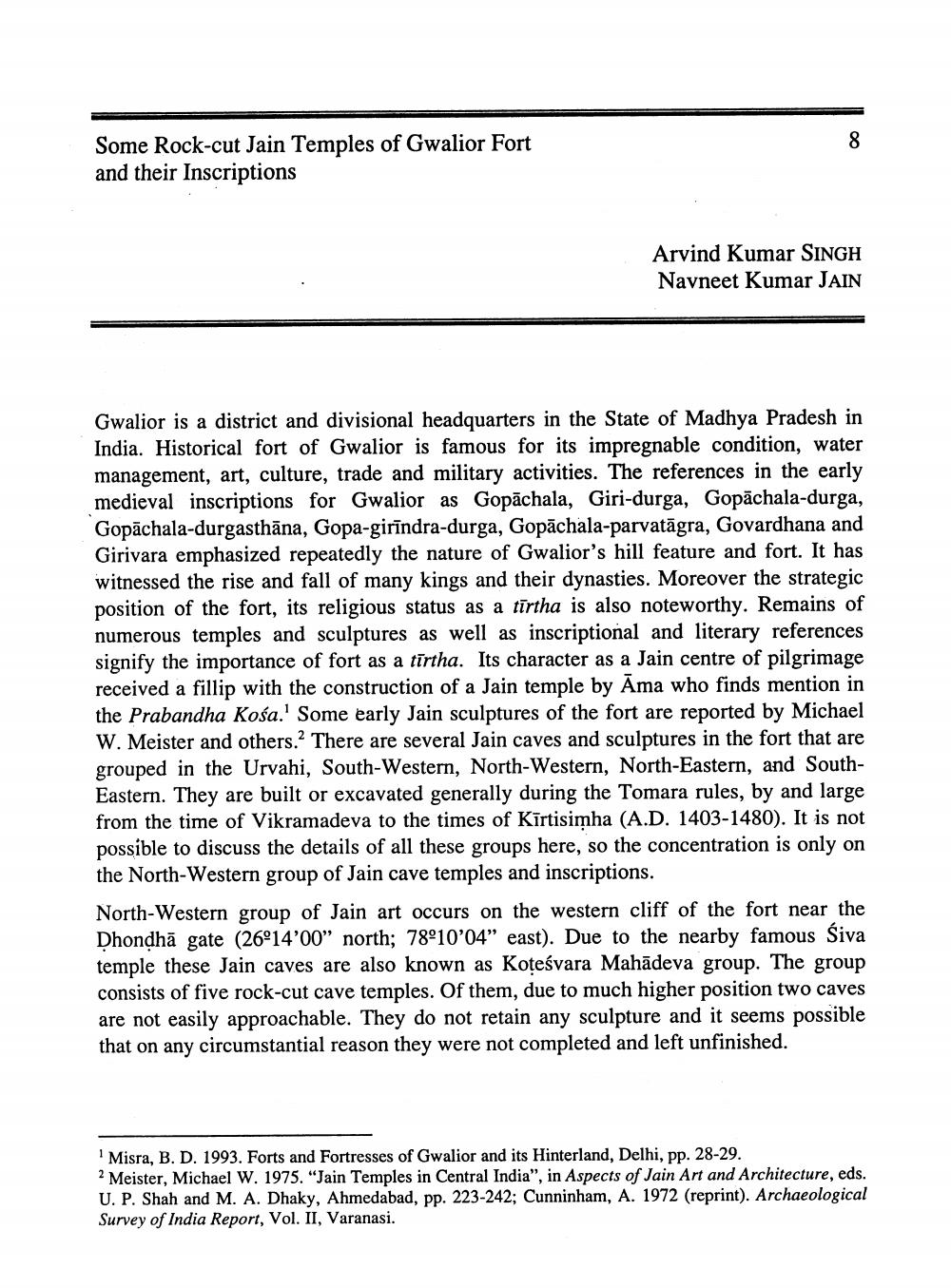________________
Some Rock-cut Jain Temples of Gwalior Fort and their Inscriptions
Arvind Kumar SINGH Navneet Kumar JAIN
Gwalior is a district and divisional headquarters in the State of Madhya Pradesh in India. Historical fort of Gwalior is famous for its impregnable condition, water management, art, culture, trade and military activities. The references in the early medieval inscriptions for Gwalior as Gopāchala, Giri-durga, Gopāchala-durga, Gopāchala-durgasthāna, Gopa-girīndra-durga, Gopāchala-parvatāgra, Govardhana and Girivara emphasized repeatedly the nature of Gwalior's hill feature and fort. It has witnessed the rise and fall of many kings and their dynasties. Moreover the strategic position of the fort, its religious status as a tīrtha is also noteworthy. Remains of numerous temples and sculptures as well as inscriptional and literary references signify the importance of fort as a tīrtha. Its character as a Jain centre of pilgrimage received a fillip with the construction of a Jain temple by Ama who finds mention in the Prabandha Kośa.' Some early Jain sculptures of the fort are reported by Michael W. Meister and others. There are several Jain caves and sculptures in the fort that are grouped in the Urvahi, South-Western, North-Western, North-Eastern, and SouthEastern. They are built or excavated generally during the Tomara rules, by and large from the time of Vikramadeva to the times of Kīrtisimha (A.D. 1403-1480). It is not possible to discuss the details of all these groups here, so the concentration is only on the North-Western group of Jain cave temples and inscriptions.
North-Western group of Jain art occurs on the western cliff of the fort near the Dhondhā gate (26°14'00” north; 78°10'04” east). Due to the nearby famous Siva temple these Jain caves are also known as Koteśvara Mahādeva group. The group consists of five rock-cut cave temples. Of them, due to much higher position two caves are not easily approachable. They do not retain any sculpture and it seems possible that on any circumstantial reason they were not completed and left unfinished.
Misra, B. D. 1993. Forts and Fortresses of Gwalior and its Hinterland, Delhi, pp. 28-29. 2 Meister, Michael W. 1975. "Jain Temples in Central India", in Aspects of Jain Art and Architecture, eds. U. P. Shah and M. A. Dhaky, Ahmedabad, pp. 223-242; Cunninham, A. 1972 (reprint). Archaeological Survey of India Report, Vol. II, Varanasi.




